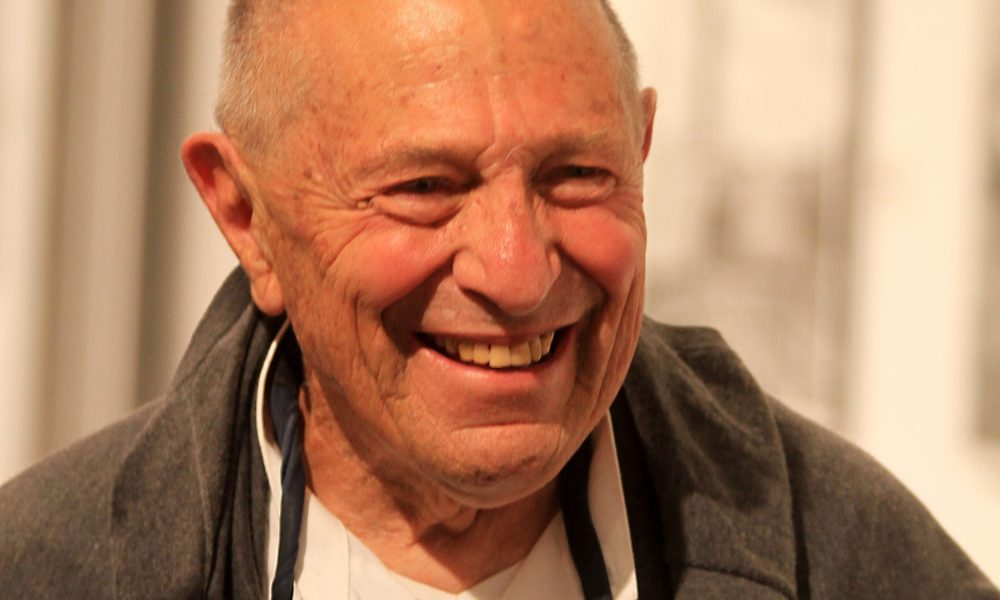News
David Goldblatt’s compassion for the ordinary is his legacy
There were different parts to internationally acclaimed veteran photographer, David Goldblatt, who passed away this week. So said Rabbi Mendel Rabinowitz, at Goldblatt’s funeral, in a beautiful tribute.

ROBYN SASSEN
Goldblatt was not only a great photographer, he was a man of compassion and principle. He loved few but deeply, he spoke little, but said much. His photographs were beguilingly simple, but spoke volumes. Goldblatt passed away on 25 June 2018, after a battle with cancer. He was 87.
Rabbi Rabinowitz described Goldblatt as someone who loved growing people. He alluded to how Goldblatt so generously gave of his time to young photographers, establishing the Photo Lab at the Market Theatre in 1989, which opened real doors to myriads of professionals in the industry.
Goldblatt had deep concern for social issues and a profound love for South Africa. Rabbi Rabinowitz deemed Goldblatt a tzaddik, because of this. “Life and death,” he said, “reflect a person’s contribution to society. He who has given a lot can never die.”
Indeed, Goldblatt was the man who gave a voice to ordinary people in South Africa, those who travelled for hours in public transport, worked in ignominious circumstances, and earned a pittance. He was not afraid to go down mine shafts to document the circumstances there, or to look white Afrikaners in the eye, and with empathy, during the thick of apartheid. Indeed, he was not afraid to voice his opinions, and turn down honours offered by structures he deemed corrupt.
The first South African photographer to host a solo exhibition at the prestigious Museum of Modern Art in New York, in 1998, Goldblatt was born in the small mining town of Randfontein on 29 November 1930, to people who had fled Lithuania. He was subject from the get-go to the hatreds of the time and place: As a white person, he was a part of the privileged few. As he was a Jew, he was hated.
The plan was clear: He, the youngest of three boys, would take over his father’s general store when he came of age. To that end, he was sent to university part time to study commerce. But David had his own dreams. When apartheid was legislated in 1948, he was 18. The field of photojournalism was just beginning; it took him more than a decade to establish himself professionally.
The master of deadpan photography, Goldblatt was a careful craftsman who had his own opinions about what mattered. He freelanced for a range of publications from 1963, including Tatler Magazine. He published his first anthology of images, On the Mines, in 1973.
Goldblatt received a great deal of international acknowledgement as an artist and as an individual, including the Jewish Achiever Award for the Arts in 2013. Without being a card-carrying anti-apartheid activist, Goldblatt made pictures that never vicariously pry into people’s lives. Rather than instances of conflagration, Goldblatt’s are moments of normalcy, which are often more telling.
Controversy sometimes touched Goldblatt. In 1985, the ANC called for a boycott of an exhibition of his that was touring Britain. This was based on the mistaken belief that he had defied the country’s cultural boycott. It took Afrapix founder Omar Badsha and Nobel Laureate Nadine Gordimer to put matters right. In 2011, he was selected to receive the South African government’s award of the Order of Ikhamanga (Silver). After careful consideration, he turned it down in protest against the so-called “Secrecy Bill”. In 2013, the inflammatory work of painter Ayanda Mabulu was censored by the Jo’burg Art Fair as its management felt Mabulu’s rude representation of then President Jacob Zuma would affect its financial success. In solidarity with Mabulu, Goldblatt removed his own work from the Fair.
Buried in the section of the cemetery reserved for those who have contributed significantly to South African society, Goldblatt was laid to rest in the presence of some of the biggest names in art, photography, and the media. From renowned artists William Kentridge and Sam Nhlengethwa to veteran photographers Paul Weinberg, Zanele Muholi, Suzy Bernstein, Cedric Nunn and Peter Magubane, mourners included television producer Harriet Gavshon and journalism gurus Anton Harber and Irwin Manoim, to name but a few. Black and white, old and young, straight and LGBTI, Muslim and Jew joined hands and hearts in their celebration of a generous, immensely modest man.
Goldblatt’s focused loyalty to the demands of his craft put him in a different league to the average octogenarian. After his retrospective earlier this year at the Centre Georges Pompidou in Paris, he continued working until shortly before his death. His legacy of work forced South Africans to look at themselves and their world with empathy and wryness. He leaves his wife, Lily; three children: Steven who lives in England, Brenda and Rasada; and two grandsons: Sam and Daniel.